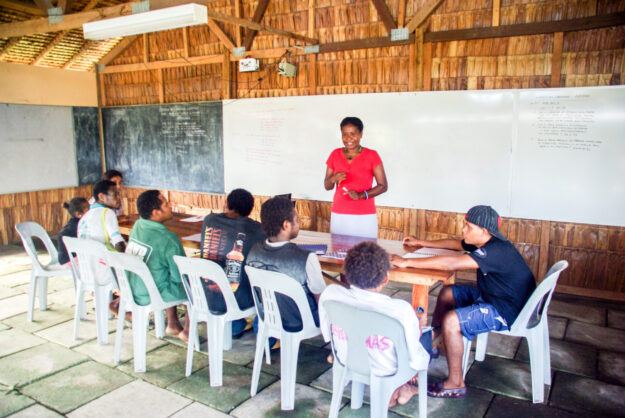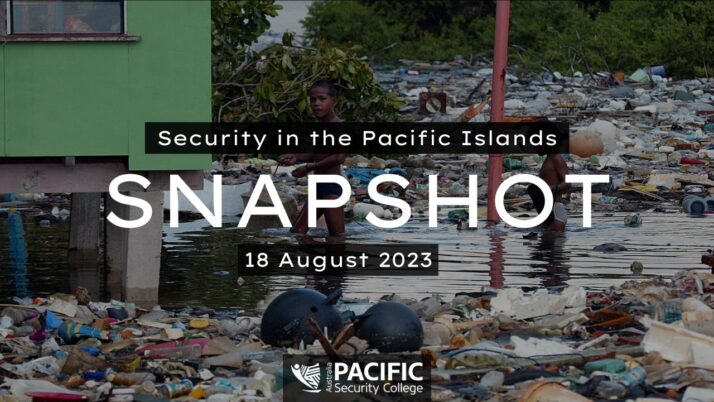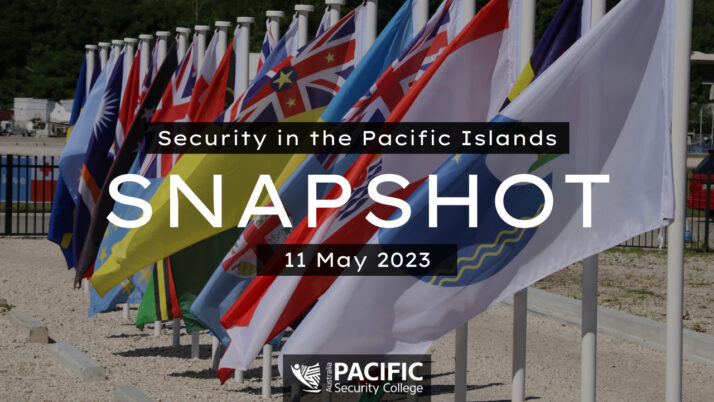Can the Pacific Engagement Visa support climate displaced peoples?

Photo: DFAT/ Irene Scott
By prioritising the Pacific Island countries that are most at risk of climate-induced displacement in its new Pacific Engagement Visa program, the Australian Government can be a leader in the region, Akka Rimon writes.
The introduction of Australia’s Pacific Engagement Visa (PEV) represents a new era for Pacific migration. Commencing in mid-2023, the visa will allow for 3,000 workers to come to Australia annually.
In contrast to previous labour mobility schemes, the PEV offers the opportunity for permanent residency, including for family members. However, it is not clear how the new visas will be allocated across the Pacific.
While people from larger Pacific Island countries (PICs) may regard the visa as an opportunity to move to greener economic pastures, for the people of Kiribati, it could offer a lifeline in the face of climate displacement.
As part of the first permanent migration scheme for workers from the Pacific and Timor-Leste, the PEV is modelled on New Zealand’s Pacific Access Category, which began in 2001.
Visas will be allocated via ballot, although how many will be allocated to each country remains unknown. The Australian federal Labor government initially announced a proportional selection formula that offered higher quotas for countries with larger populations.
However, given that climate-displaced people are not specifically recognised under the 1951 United Nations refugee convention, many have argued that the visa should give consideration to the countries that are most impacted.
Kiribati is a prime example of a nation that could benefit massively from such a recalibration. Located in the Pacific Ocean, halfway between Australia and Hawai‘i, Kiribati is one of the most climate change vulnerable nations on earth. Beyond the droughts and famine it is already facing, expected sea-level rise will make its islands largely unhabitable within this century.
The PEV program could also offer significant material developmental benefits. The economy of Kiribati is small, and its prospects for growth are limited by its rapidly growing population of nearly 120,000 people.
With a minuscule private sector, the over-burdened government is in dire need of economic revenue expansion and access to markets, as well as employment for its citizens.
Importantly, many I-Kiribati have experience in the sectors in which Australia is facing a shortage of skilled workers. This has been shown most clearly via the large number of I-Kiribati healthcare professionals that have migrated since the introduction of the 2006 Kiribati-Australia Nursing Initiative.
This growth has reinforced the demand for the skills of I-Kiribati workers from Australian employers, and demonstrates their value to the Australian economy and society. It also validates the Kiribati training and recruiting systems.
The result is a win-win relationship in which I-Kiribati workers meet skills needed in Australia whilst building their economic resilience and, via remittances, supporting families at home.
To maximise benefits for low-lying islands, the Pacific Islands Forum (PIF) could examine how to integrate the aims of the Boe Declaration on Regional Security – the Pacific’s primary framework for cooperation on security issues – into PEV-style migration programs.
This could help the PIF determine its position on the PEV program, and address the emerging concerns of some member states about the impacts of brain drain and the climate crisis. Simultaneously, this assures Australia of a fully utilised program.
The introduction of the PEV has reinforced Australia’s economic links with Pacific Island countries. However, it could also serve as an opportunity for the Australian Government to take on the mantle of regional climate leadership. By prioritising low-lying island states that have limited options in the face of sea-level rise, Australia could prove it is truly part of the Pacific family.
Akka Rimon
This article is based upon a paper published by ANU Department of Pacific Affairs (DPA) as part of its ‘In brief’ series. The original paper can be found here.
More Stories

Security Snapshot - 18 Aug 2023
Pacific Security Snapshot | 18 August 2023
The security stories shaping the region ➣ Pacific Resilience Facility endorsed at the Forum Economic Ministers Meeting ➣ The Pacific Climate Security Assessment Guide ➣ French President Macron visits Papua New Guinea and Vanuatu ➣ US Secretary of State and Secretary of Defence in the Pacific ➣ Bougainville eruption leaves 8,000 displaced Climate Security Ministers…

Security Snapshot - 11 May 2023
Pacific Security Snapshot | 11 May 2023
The security stories shaping the region ➣ Australia announces Pacific support package ➣ United States President Joe Biden to visit the Pacific ➣ Embassy of the United States opens in Tonga ➣ Chinese Special Envoy for the Pacific visits Samoa ➣ 14th Pacific Heads of Health meeting in Fiji ➣ Violence in Papua New Guinea’s Porgera…






